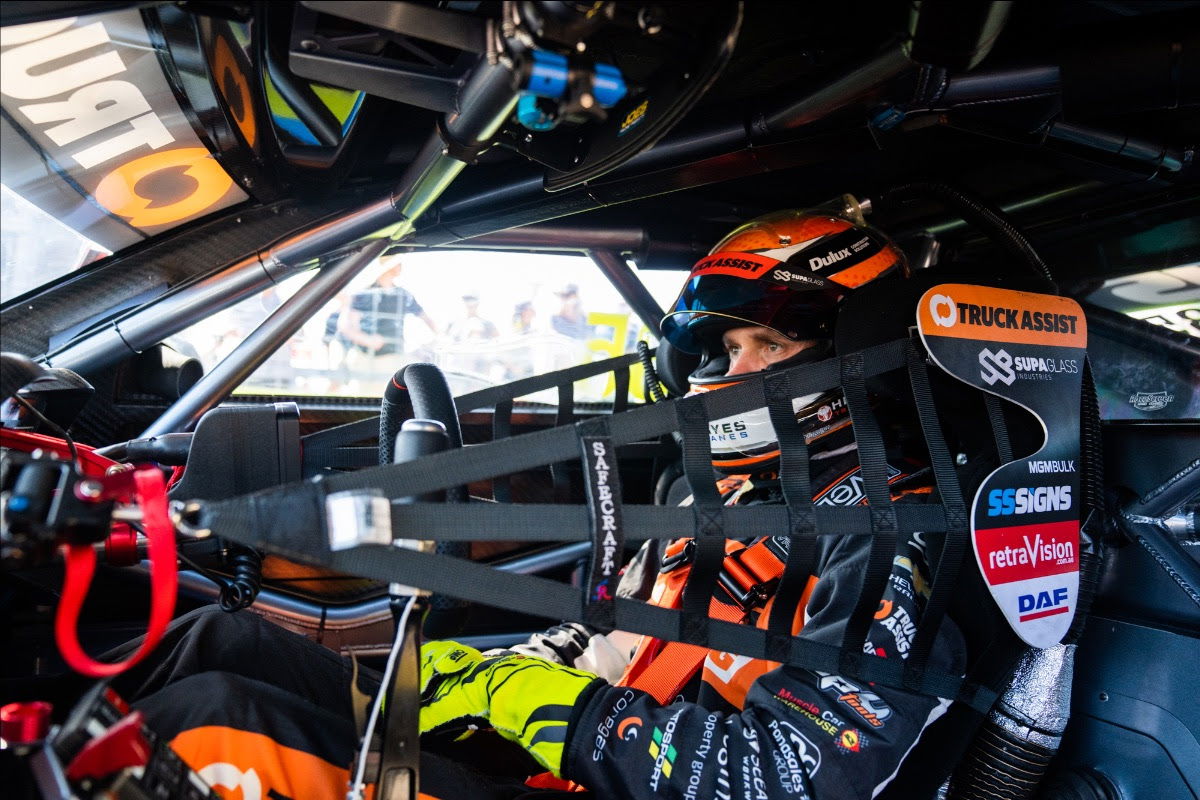

Left-foot brakers are migrating to the more common right-foot method due to the nature of the new Gen3 Supercars’ powertrains.
The vast majority of the field were already right-foot brakers given the driving requirements of the category’s manual transmission, which is one of the few carryover items from the Car of the Future era.
While Supercars seriously looked at adopting paddle shift and automated blip, it ultimately heeded the wishes of fans and drivers by staying with the sequential gearstick and manual downshift.
It means that it is still necessary to blip the throttle on a down change in order to match the engine speed to the wheel speed and thus avoid a compression lock-up of the rear brakes.
Left-foot braking was feasible but, without the ability to hit the clutch pedal, it is a technique which requires more finesse.
However, with the move to drive-by-wire and single throttle body engines, rather than the old 5.0-litre units featuring individual throttle bodies, that task has become much harder.
2021 Carrera Cup series winner Cameron Hill stuck with left-foot braking when he moved into the Dunlop Super2 Series last year, during which time he made his Repco Supercars Championship debut as an enduro driver at PremiAir Racing.
Now he competes full-time for Matt Stone Racing, and quickly decided to swap to right-foot braking in the #34 Truck Assist Gen3 Chevrolet Camaro.
“I have changed since stepping up this year,” he told Speedcafe.com following his recent rookie test day at The Bend.
“I was still left-foot last year in Super2, but then at the start of this year, I just found with the single throttle body and the mapping and everything, it was quite difficult to get my blips.
“So, I just sort of switched over to right-foot and didn’t have any dramas with it when I got to Newcastle; it felt quite comfortable.”
On how difficult the change was, Hill explained, “You’re a little bit worried about it at first because you don’t have the muscle memory but I just made sure, before I got to Newcastle, I did a lot of time on the sim and once I sort of rolled out it came back to me quite natural.
“Now it’s just what I’m used to. I think on the in lap [in his rookie test] I tried a bit of left-foot and I was like, ‘Oo, it doesn’t feel right.’
“Probably after the Sydney test day I sort of started to feel a lot more comfortable with it.”
WATCH: Russell Ingall explains the heel-and-toe and left-foot braking
Grove Racing’s Matt Payne, who followed a somewhat similar route from Carrera Cup to Super2 and now a rookie campaign in the first Gen3 season of the Supercars Championship, is also said to have moved away from left-foot braking.
That revelation came from Shane van Gisbergen in a recent episode of the Rusty’s Garage podcast, when he revealed that his new enduro co-driver Richie Stanaway is still getting used to braking in his Red Bull Ampol Racing Camaro.
“He is struggling a fair bit with the electronic throttle and the single throttle body,” said van Gisbergen.
“They don’t have a good response so the left-foot brakers are all struggling.
“I know Matt Payne’s gone to right-foot braking, because the response is not very good in the cars.
“It’s the same for everyone – Ford and the Chev – but Richie’s struggling with his timing and being able to brake confidently and I think most people have migrated to right-foot.
“So, we’re trying to make things better for him and I know the category’s trying to make the engines better as well, so hopefully it improves for everyone and he can get more comfortable.”
Stanaway, whose background is largely sportscars and the GP2 Series, is on the record about his difficulties in trying to move away from left-foot braking.
Regardless, he managed to qualify fifth in the rain when he returned to Supercars in the Boost Mobile/Erebus Motorsport wildcard entry at last year’s Repco Bathurst 1000.
The 2017 Sandown 500 winner was then snapped up by Triple Eight when Garth Tander made the shock defection to Grove to drive one of its Penrite Mustangs in this years enduros.




















Discussion about this post